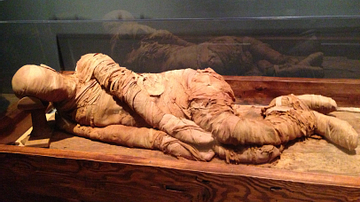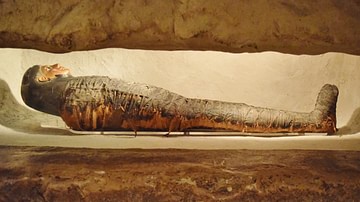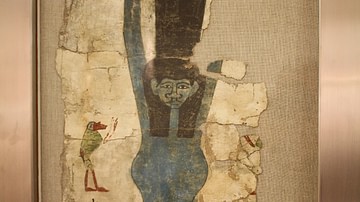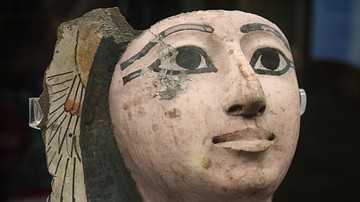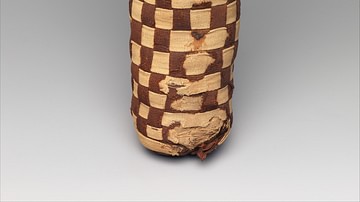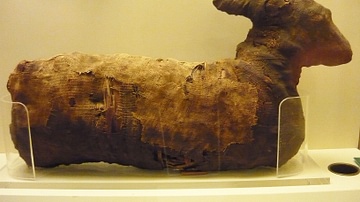Illustration
The mummy, wrapped in linen bandages, is enclosed in a body-shaped envelope of cartonnage (a light-weight material composed of layers of gummed linen and plaster), which could be moulded to the desired shape. The surface is decorated with texts and religious images in brilliant colors. On the upper body, a ram-headed falcon representing the sun-god embraces the deceased. Between this and the second falcon, are the figures of the 4 sons of Horus, minor deities who protected the internal organs of the body. A central inscription addressed to the sun god requests funerary offerings on behalf of the dead woman. The wooden coffin is also painted and inscribed but the details are obscured by a coat of thick varnish. X-rays of the mummy have shown that Tentdinebu died at an advanced age. Artificial eyes were inserted into the sockets and the thorax, abdomen, and pelvis were filled with dense packing material; all features typical of the Egyptian embalming techniques in the 22nd and 21st Dynasties. Probably from Thebes, Egypt. 22nd Dynasty, 945-716 BCE. (National Museum of Ireland-Archaeology, Dublin, Republic of Ireland)
About the Author
Cite This Work
APA Style
Amin, O. S. M. (2015, December 18). Mummy of Tentdinebu. World History Encyclopedia. Retrieved from https://www.worldhistory.org/image/4307/mummy-of-tentdinebu/
Chicago Style
Amin, Osama Shukir Muhammed. "Mummy of Tentdinebu." World History Encyclopedia. Last modified December 18, 2015. https://www.worldhistory.org/image/4307/mummy-of-tentdinebu/.
MLA Style
Amin, Osama Shukir Muhammed. "Mummy of Tentdinebu." World History Encyclopedia. World History Encyclopedia, 18 Dec 2015, https://www.worldhistory.org/image/4307/mummy-of-tentdinebu/. Web. 26 Apr 2025.



